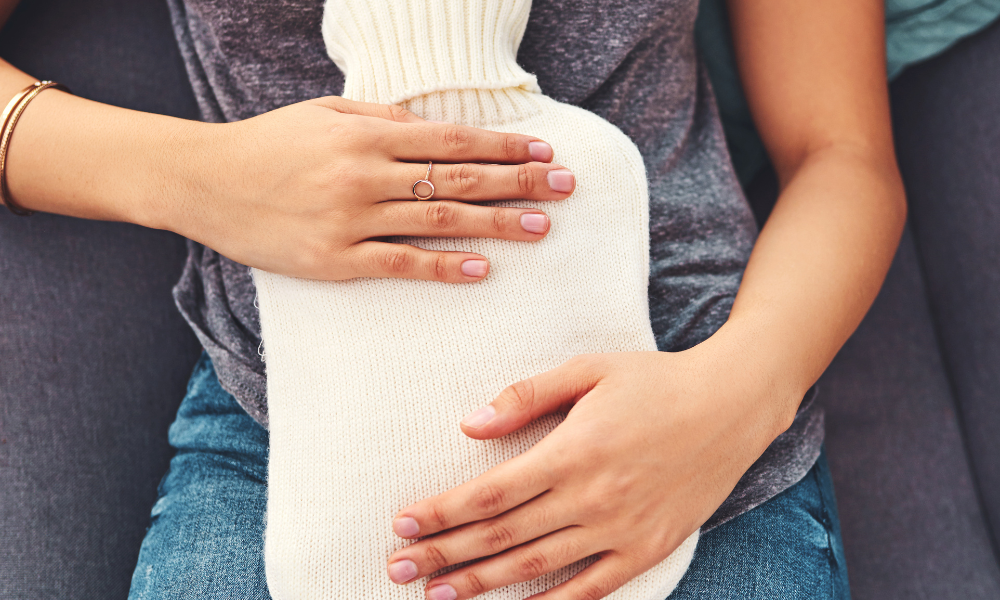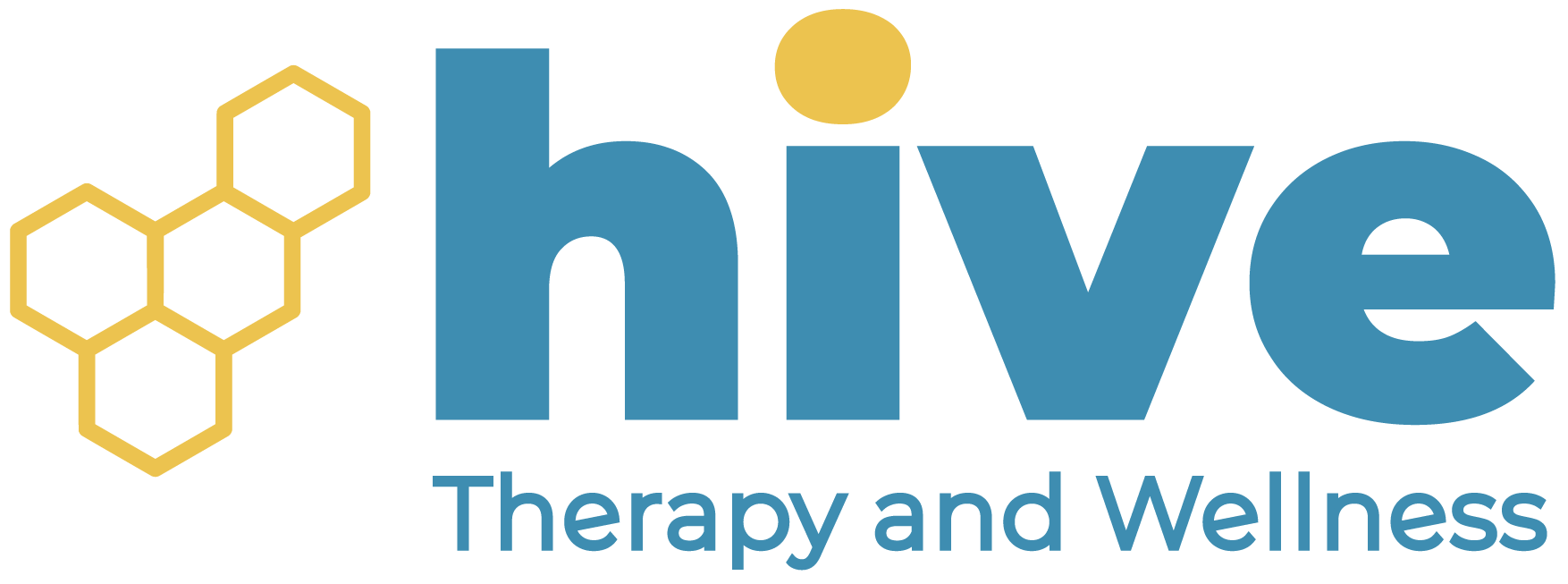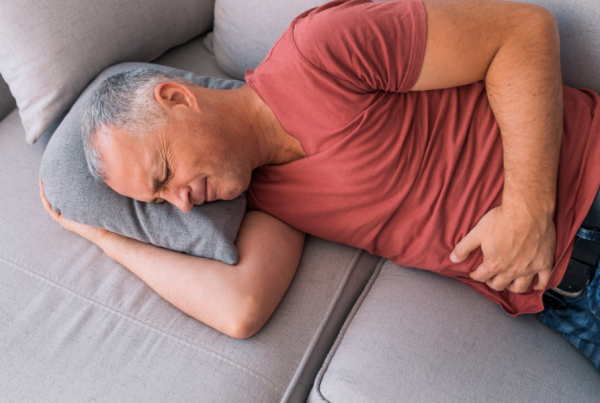Uterine Fibroids
Move Better. Live Fuller. Your Wellness Journey Starts Here.
Schedule a FREE Discovery Call!
What Are Uterine Fibroids?
Uterine fibroids (also called leiomyomas or myomas) are benign (unharmful) growths found inside the uterus, on the outside of the uterus, or within the uterine muscle wall. Because they have to do with hormones, fibroids are more common in those who have begun menstruating, and are less common after menopause. They are noncancerous tumors that can create symptoms depending on the size, location, and how many of them you have.
Fibroids can range from very small (like a seed) to very large (multiple inches wide). They can cause pain and other symptoms, particularly if they are very large or in a harmful location. Uterine fibroids can vary greatly, and may even exist without you knowing. Many people will have them in their lifetime with no symptoms.

However, many individuals may experience pain and a variety of other symptoms caused by fibroids, which can affect their quality of life. Some examples of symptoms that can occur due to fibroids include:
- Heavy or painful menstruation
- Anemia as a result of heavy menstruation
- Bleeding in between periods
- Pain before or after your period
- Frequent menstrual bleeding
- Pelvic pain
- Back pain
- Pregnancy complications
- Painful intercourse
- Frequent urination
- Incomplete emptying of the bladder
- Fullness or bloating in the abdomen
- Constipation
- Pain in the abdomen
- In more rare cases, infertility
As mentioned before, the symptoms a person experiences will depend on the location, number, and size of their fibroids. For example, a fibroid located close to the bladder may put pressure on the bladder and cause problems with urination.
Another common symptom caused by fibroids is heavy menstrual bleeding—this is due to an increase in the amount of blood vessels and tissue in the endometrium. This symptom is thought to be caused by submucosal or intramural fibroids, which grow in the inner or middle layers of the uterus.
While fibroids are not an extremely dangerous concern, they can turn into “degenerating fibroids” if left untreated, which can cause pain, swelling, and fever. A degenerating fibroid is typically a larger fibroid that is dying due to a lack of adequate blood supply. This can last anywhere from a few days to a few weeks, and can cause anywhere from mild to severe pain, depending on the individual case.
This is because when a fibroid dies, it gives off a chemical that results in the symptoms described earlier—but this isn’t necessarily the “end” for the fibroid. They can begin to regrow and create regular symptoms once again. Additionally, only a small percentage of fibroids will naturally go away without treatment. Therefore, if you experience symptoms, you shouldn’t ignore them.
What Causes Uterine Fibroids?
There is not an exact cause known for uterine fibroids, but there are some factors that may increase your chances of having them:
- Hormonal imbalances
- Genetics
- Lifestyle choices such as diet
- Weight
- Age (more common for those in their 30’s and 40’s)
- Race (African Americans have worse fibroid symptoms and are diagnosed more often than other racial groups)
Although most of these aspects are not factors you can change, fibroids are treatable and the symptoms are manageable with physical therapy. We’ll discuss this next!
Physical Therapy for Uterine Fibroids
Uterine fibroids are treatable by a variety of options, which depend on your unique case of fibroids, your symptoms, and if you plan on having a pregnancy in the future or prefer to keep your uterus. Treatments can include birth control, hormonal medications, iron supplements, uterine fibroid embolization (UFE), surgery to remove the fibroids, or surgery to partially or entirely remove the uterus.
Additionally, pelvic floor physical therapy can help tremendously to manage fibroid symptoms by reducing pain, relieving muscle tension, ensuring bladder and bowel function, relieving sexual dysfunction, and improving your overall quality of life. Let’s look at some treatment methods your physical therapist at Hive Therapy and Wellness will use to achieve this!
Pain Management
Uterine fibroids can cause pain in different areas of the body, such as the pelvis, abdomen, or lower back—physical therapy can relieve this pain with manual therapy. Tension and tightness in muscles of the pelvic region can not only create pelvic floor dysfunction and discomfort, but can also create pain by putting pressure on your fibroids.
Manual techniques can be utilized to target those tight muscles and trigger points, releasing tension and improving comfort as a result. Some common pain-relieving methods include cupping, dry needling, tissue scraping, manual techniques, and more.
Pelvic Floor Training
Addressing tight muscles in areas like the pelvic floor is important too, for aspects such as bladder, bowel, and sexual function. Tight muscles, which can form as a result of pain guarding, can also lead to pelvic floor dysfunction.
Pelvic floor dysfunction, paired with fibroids near the bladder or bowels, can result in very unideal symptoms of constipation or frequent urination. Therefore, your pelvic floor physical therapist will work to strengthen the pelvic floor, address tight muscles, restore coordination, and improve overall function.
Exercise and Posture Improvement
In order to further reduce tight or inflexible muscles, improve blood flow, and reduce pressure on the pelvic region, your physical therapist will prescribe a curated exercise routine. For example, to support pelvic stability and reduce pressure, your physical therapist will incorporate core exercises to target your abdominals, low back, and pelvic floor.
Exercises routines will always include stretching exercises to improve mobility and flexibility of these areas. Your provider will make improvements to your posture to combat bad posture habits caused by large uterine fibroids, which can often lead to straining and pain in the pelvis, hips, and back.
Sexual Health
Fibroids can unfortunately cause painful sex and a build-up of tension in the pelvic area, which will only worsen sexual comfort and function. Pelvic floor physical therapy will aim to relieve discomfort and improve function by addressing pelvic floor health and reducing pelvic pain. This can include muscle relaxation and improving your coordination of the pelvic floor muscles. Additionally, your physical therapist can provide suggestions for sexual aids, positioning, and relaxation techniques to practice at home.
Relaxation techniques can reduce muscle tension as well as anxiety and stress levels; which can be especially helpful for this condition that frequently causes pain or other symptoms. Mental health is just as important as physical health, so relaxation techniques are very useful in many applications!
As you can see, there are many different ways to manage your symptoms caused by fibroids. While physical therapy is not a cure or direct treatment for uterine fibroids, it can be very useful for managing and relieving your symptoms. You don’t have to live with pain or other annoying symptoms—even while seeking out other direct treatments!
Additionally, if your case requires more invasive treatments such as surgery to remove fibroids or any part of your uterus, physical therapy will be essential post-op. Pelvic floor physical therapy will ensure pelvic floor function post-surgery, as well as manage pain and tight muscles during recovery.
Regardless of your situation or the severity of your uterine fibroids, your physical therapy treatment is always curated especially for your needs! The physical therapists at Hive Therapy and Wellness take a holistic approach to care and utilize many different treatments to address pelvic pain and other symptoms caused by fibroids. While under Hive’s care, you can expect any of the following treatments to be included in your comprehensive care plan:
- Neuromuscular re-education
- Manual therapy
- Exercise prescription
- Dry needling
- Cupping
- Tissue scraping
- Behavioral modifications
- Therapeutic activities
- Electrical muscle stimulation
- Spinal manipulation
- Therapeutic modalities
- Biofeedback
Uterine fibroids (also called leiomyomas or myomas) are benign (unharmful) growths found inside the uterus, on the outside of the uterus, or within the uterine muscle wall.
Because they have to do with hormones, fibroids are more common in those who have begun menstruating, and are less common after menopause.
They are noncancerous tumors that can create symptoms depending on the size, location, and how many of them you have.
Fibroids can range from very small (like a seed) to very large (multiple inches wide). They can cause pain and other symptoms, particularly if they are very large or in a harmful location.
Uterine fibroids can vary greatly, and may even exist without you knowing. Many people will have them in their lifetime with no symptoms.
However, many individuals may experience pain and a variety of other symptoms caused by fibroids, which can affect their quality of life. Some examples of symptoms that can occur due to fibroids include:
- Heavy or painful menstruation
- Anemia as a result of heavy menstruation
- Bleeding in between periods
- Pain before or after your period
- Frequent menstrual bleeding
- Pelvic pain
- Back pain
- Pregnancy complications
- Painful intercourse
- Frequent urination
- Incomplete emptying of the bladder
- Fullness or bloating in the abdomen
- Constipation
- Pain in the abdomen
- In more rare cases, infertility
As mentioned before, the symptoms a person experiences will depend on the location, number, and size of their fibroids. For example, a fibroid located close to the bladder may put pressure on the bladder and cause problems with urination.
Another common symptom caused by fibroids is heavy menstrual bleeding—this is due to an increase in the amount of blood vessels and tissue in the endometrium.
This symptom is thought to be caused by submucosal or intramural fibroids, which grow in the inner or middle layers of the uterus.
While fibroids are not an extremely dangerous concern, they can turn into “degenerating fibroids” if left untreated, which can cause pain, swelling, and fever.
A degenerating fibroid is typically a larger fibroid that is dying due to a lack of adequate blood supply. This can last anywhere from a few days to a few weeks, and can cause anywhere from mild to severe pain, depending on the individual case.
This is because when a fibroid dies, it gives off a chemical that results in the symptoms described earlier—but this isn’t necessarily the “end” for the fibroid.
They can begin to regrow and create regular symptoms once again. Additionally, only a small percentage of fibroids will naturally go away without treatment. Therefore, if you experience symptoms, you shouldn’t ignore them.
There is not an exact cause known for uterine fibroids, but there are some factors that may increase your chances of having them:
- Hormonal imbalances
- Genetics
- Lifestyle choices such as diet
- Weight
- Age (more common for those in their 30’s and 40’s)
- Race (African Americans have worse fibroid symptoms and are diagnosed more often than other racial groups)
Although most of these aspects are not factors you can change, fibroids are treatable and the symptoms are manageable with physical therapy. We’ll discuss this next!
Uterine fibroids are treatable by a variety of options, which depend on your unique case of fibroids, your symptoms, and if you plan on having a pregnancy in the future or prefer to keep your uterus.
Treatments can include birth control, hormonal medications, iron supplements, uterine fibroid embolization (UFE), surgery to remove the fibroids, or surgery to partially or entirely remove the uterus.
Additionally, pelvic floor physical therapy can help tremendously to manage fibroid symptoms by reducing pain, relieving muscle tension, ensuring bladder and bowel function, relieving sexual dysfunction, and improving your overall quality of life.
Let’s look at some treatment methods your physical therapist at Hive Therapy and Wellness will use to achieve this!
Pain Management
Uterine fibroids can cause pain in different areas of the body, such as the pelvis, abdomen, or lower back—physical therapy can relieve this pain with manual therapy.
Tension and tightness in muscles of the pelvic region can not only create pelvic floor dysfunction and discomfort, but can also create pain by putting pressure on your fibroids.
Manual techniques can be utilized to target those tight muscles and trigger points, releasing tension and improving comfort as a result. Some common pain-relieving methods include cupping, dry needling, tissue scraping, manual techniques, and more.
Pelvic Floor Training
Addressing tight muscles in areas like the pelvic floor is important too, for aspects such as bladder, bowel, and sexual function. Tight muscles, which can form as a result of pain guarding, can also lead to pelvic floor dysfunction.
Pelvic floor dysfunction, paired with fibroids near the bladder or bowels, can result in very unideal symptoms of constipation or frequent urination.
Therefore, your pelvic floor physical therapist will work to strengthen the pelvic floor, address tight muscles, restore coordination, and improve overall function.
Exercise and Posture Improvement
In order to further reduce tight or inflexible muscles, improve blood flow, and reduce pressure on the pelvic region, your physical therapist will prescribe a curated exercise routine.
For example, to support pelvic stability and reduce pressure, your physical therapist will incorporate core exercises to target your abdominals, low back, and pelvic floor.
Exercises routines will always include stretching exercises to improve mobility and flexibility of these areas.
Your provider will make improvements to your posture to combat bad posture habits caused by large uterine fibroids, which can often lead to straining and pain in the pelvis, hips, and back.
Sexual Health
Fibroids can unfortunately cause painful sex and a build-up of tension in the pelvic area, which will only worsen sexual comfort and function. Pelvic floor physical therapy will aim to relieve discomfort and improve function by addressing pelvic floor health and reducing pelvic pain.
This can include muscle relaxation and improving your coordination of the pelvic floor muscles. Additionally, your physical therapist can provide suggestions for sexual aids, positioning, and relaxation techniques to practice at home.
Relaxation techniques can reduce muscle tension as well as anxiety and stress levels; which can be especially helpful for this condition that frequently causes pain or other symptoms.
Mental health is just as important as physical health, so relaxation techniques are very useful in many applications!
As you can see, there are many different ways to manage your symptoms caused by fibroids. While physical therapy is not a cure or direct treatment for uterine fibroids, it can be very useful for managing and relieving your symptoms.
You don’t have to live with pain or other annoying symptoms—even while seeking out other direct treatments!
Additionally, if your case requires more invasive treatments such as surgery to remove fibroids or any part of your uterus, physical therapy will be essential post-op.
Pelvic floor physical therapy will ensure pelvic floor function post-surgery, as well as manage pain and tight muscles during recovery.
Regardless of your situation or the severity of your uterine fibroids, your physical therapy treatment is always curated especially for your needs!
The physical therapists at Hive Therapy and Wellness take a holistic approach to care and utilize many different treatments to address pelvic pain and other symptoms caused by fibroids.
While under Hive’s care, you can expect any of the following treatments to be included in your comprehensive care plan:
- Neuromuscular re-education
- Manual therapy
- Exercise prescription
- Dry needling
- Cupping
- Tissue scraping
- Behavioral modifications
- Therapeutic activities
- Electrical muscle stimulation
- Spinal manipulation
- Therapeutic modalities
- Biofeedback
You can learn more about these treatments on our Treatments Page.





